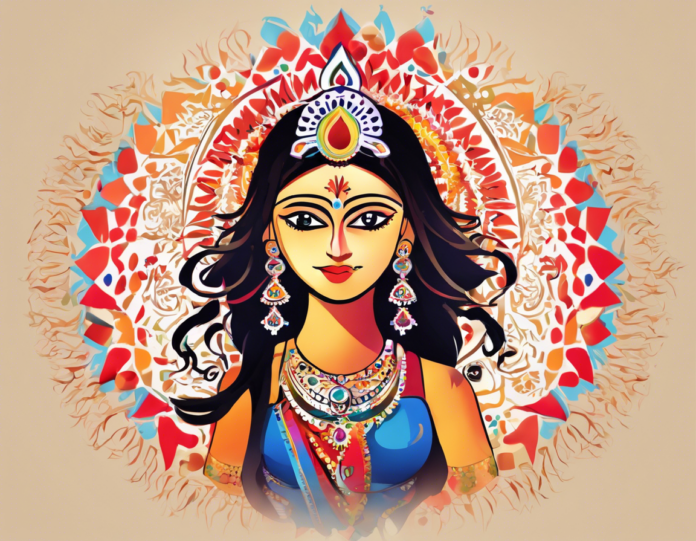Navratri 2023: Dates, Significance, and Celebrations!
Navratri, also known as Durga Puja, is a vibrant and joyous Hindu festival celebrated with great enthusiasm across India and in various parts of the world. This auspicious festival lasts for nine nights and ten days, during which devotees worship the different forms of Goddess Durga. In 2023, Navratri is set to begin on Sunday, the 17th of September, and will culminate on Monday, the 25th of September. The festival holds immense cultural and religious significance and is observed in different ways in various regions.
Significance of Navratri:
Navratri signifies the victory of good over evil and is celebrated in honor of the various forms of Goddess Durga. Each day of the festival is dedicated to a different avatar of the Goddess, with the tenth day known as Vijayadashami or Dussehra, marking the triumph of Lord Rama over the demon king Ravana. Navratri is a time for fasting, prayer, and devotion to seek blessings from the divine feminine energy.
Navratri Celebrations:
The nine nights of Navratri are filled with colorful rituals, festive music, traditional dances, and delicious food. In many parts of India, especially in Gujarat and Maharashtra, people perform the energetic dance form known as Garba and Dandiya Raas as a part of their celebrations. Homes and temples are adorned with lights, flowers, and idols of Goddess Durga, while devotees dress in traditional attire and participate in pujas and aartis.
Navratri Special Foods:
Fasting is an integral part of Navratri for many devotees, and they prepare special dishes using ingredients such as buckwheat flour, amaranth (rajgira), potatoes, sabudana (tapioca pearls), and nuts. Some popular dishes enjoyed during Navratri include sabudana khichdi, kuttu ki puri, singhare ke atte ka halwa, and fruit salads.
FAQs about Navratri:
Q1: What is the significance of the nine days of Navratri?
A1: The nine days of Navratri are dedicated to different forms of Goddess Durga, with each day symbolizing a specific quality or virtue.
Q2: Can anyone participate in Navratri celebrations?
A2: Yes, Navratri is a festival that is open to everyone, and people from all backgrounds are welcome to join in the festivities.
Q3: Is fasting mandatory during Navratri?
A3: Fasting is a personal choice during Navratri, and not mandatory for everyone. People with health issues or dietary restrictions can opt for a modified form of fasting.
Q4: What are some popular Navratri songs and music?
A4: Garba and Dandiya Raas songs are popular during Navratri, with melodies that celebrate the spirit of the festival and invoke devotion to the Goddess.
Q5: How is Navratri celebrated in different parts of India?
A5: Navratri celebrations vary across India, with regional rituals, dances, and traditions that reflect the cultural diversity of the country.
Q6: What is the significance of Garba and Dandiya Raas dances during Navratri?
A6: Garba and Dandiya Raas are traditional dance forms that symbolize the joy of the harvest season and the divine union of Lord Krishna and Radha.
Q7: Are there any specific colors or dress codes associated with each day of Navratri?
A7: Yes, each day of Navratri is associated with a specific color, such as red, yellow, green, and blue, and devotees often dress accordingly to express devotion to the Goddess.
Q8: What is the significance of offering Kanya Pujan during Navratri?
A8: Kanya Pujan, also known as Kanjak, involves worshipping young girls as incarnations of the Goddess, symbolizing purity and divinity.
Q9: How do people conclude Navratri celebrations on Vijayadashami or Dussehra?
A9: Vijayadashami or Dussehra marks the end of Navratri, and people celebrate by burning effigies of Ravana, signifying the victory of good over evil.
Q10: Are there any specific prayers or mantras recited during Navratri?
A10: Yes, devotees recite various stotras, mantras, and chants dedicated to Goddess Durga, such as Durga Chalisa, Devi Suktam, and Mahishasura Mardini Stotram to seek her blessings and protection.
Navratri is a time of devotion, joy, and cultural revelry that brings communities together in celebration of faith and tradition. It is a festival that exemplifies the spirit of unity, positivity, and divine grace, reminding us of the eternal victory of light over darkness and good over evil. As we prepare to welcome Navratri in 2023, let us embrace the festive spirit, seek blessings from Goddess Durga, and immerse ourselves in the colorful tapestry of rituals and celebrations that define this auspicious occasion.

